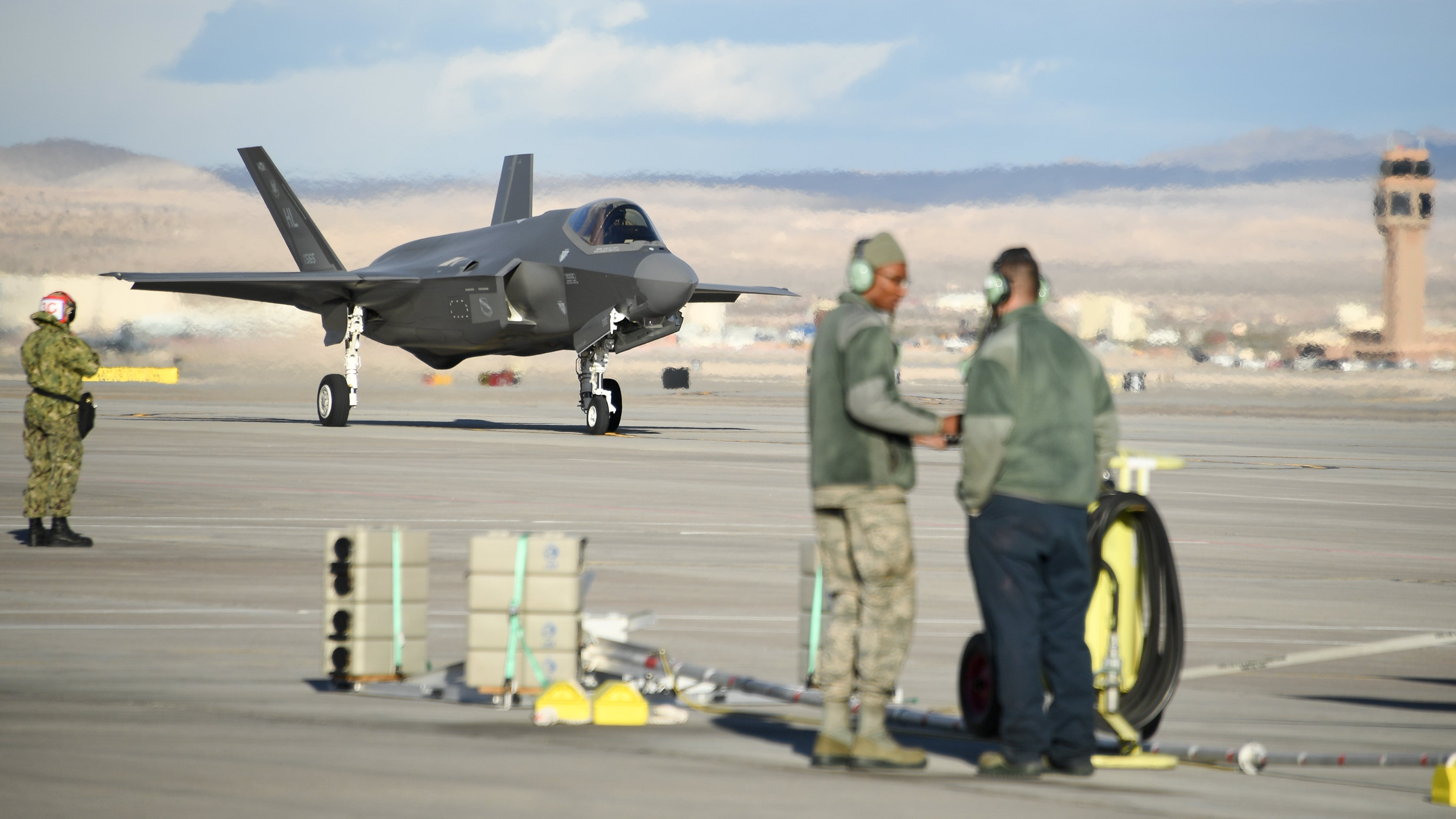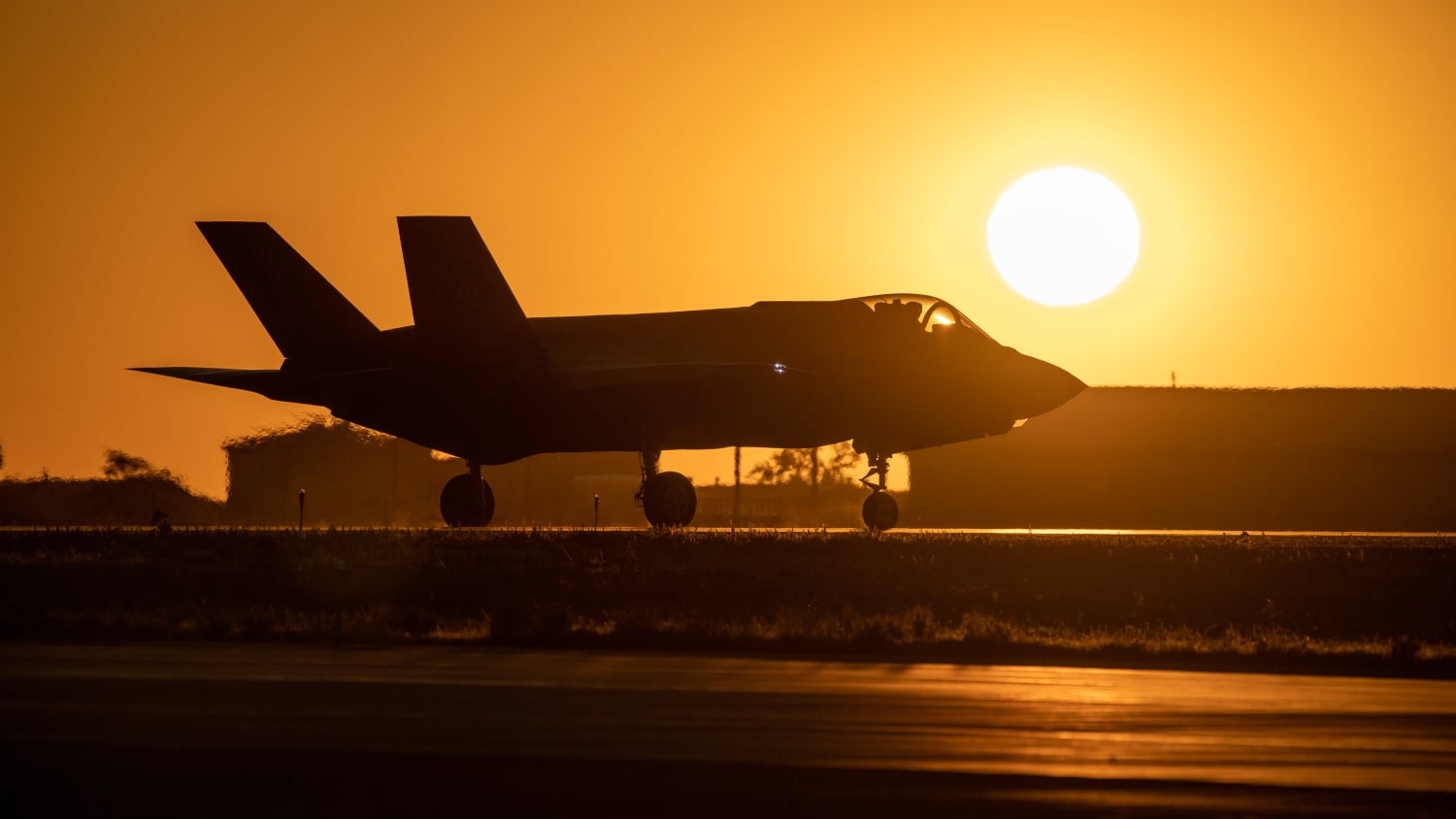WASHINGTON – The Pentagon and Lockheed Martin are at odds over how much data the military can have access to for its own jet, the F-35, and that’s creating renewed friction in the fight to fix longstanding issues with the automated logistics system vital to keeping it flying.
The Pentagon and Lockheed say a relaunched version of the Autonomic Logistics Information System, or ALIS, should be ready to start sending to squadrons by September 2020. Both the military’s top acquisition official and the F-35 program manager expressed frustration to lawmakers at a House Armed Services subcommittee hearing Tuesday with how much control Lockheed asserts over crucial data for the system.
ALIS is an off-board system that runs the maintenance and logistics system for the F-35.
“One of the key elements of coming up with a new ALIS architecture, data standards, and all the other parts that would make a very good system is understanding the data set as it exists today — what all the algorithms are — and we are still in the process of going through that with Lockheed Martin,” said Ellen Lord, the under secretary of defense for acquisition and sustainment. “But understanding where all the intellectual property is and making sure the government has access to what it has paid for is a key part of rearchitecting ALIS.”
RELATED

The fight over intellectual property stems from the original concept for the program, which gave Lockheed Martin sweeping control over virtually every major aspect of the F-35, from design and fabrication to maintenance, parts and logistics. But in recent years, dissatisfied by rising costs and delays, the Pentagon has sought to wrest more control back from Lockheed. Intellectual property rights and disputes over proprietary data, however, have often tripped up such efforts.
Frustrations
Some of Lockheed’s intellectual property assertions have bordered on ridiculous, according to F-35 Program Executive Officer Lt. Gen. Eric Fick, but getting a handle on what data the military needs to do its job is crucial, he said.
“We still have concerns, there still are roadblocks as we go to execute,” Fick said. "Everything from something as simple as U.S. government documents that get uploaded into a system and come back with Lockheed Martin proprietary markings on it. That is a frustrating occurrence, but not one that prevents us from doing work.
“What we’re working to do is to figure out where are the places at which intellectual property assertions actually prevent us from doing the kind of work that we intend to do. … We’re getting to a place where we don’t need all the data, but the data that we need — it’s important that we pursue it.”
Lord told lawmakers that the key to getting a successful system was breaking Lockheed’s grip on the logistics data infrastructure and housing more of it in a government cloud.
RELATED

“One of the challenges we have is that fact that a lot of the ALIS data and functionality works back through Lockheed Martin computers,” Lord said. ‘So, what we need to have in a newly rearchitected ALIS to is have that in a government cloud and accessible. So, this deconflicting of Lockheed data and government data will become much more clear.”
The Pentagon would like to leverage more of its internal software development capabilities to get after a newly reconstructed ALIS system, specifically inside the Air Force, Lord said, but resolving the intellectual property disputes is the key.
Lockheed, for its part, says it is investing significant company resources in developing solutions to both improve the current ALIS system, known as ALIS classic, but also in the redesigned “ALIS Next.”
“We are spending about $50 million of internal funds to improve classic ALIS," said Gregory Ulmer, Lockheed’s general manager of the F-35 program. “We’re also implementing additional company funds in the order of $120 [million] to support new architecture investments.”
Fick, who runs the Joint Program Office, told lawmakers that the latest software release for ALIS is expected this month. He predicted “significant progress” by September 2020 toward four different efforts to improve ALIS, including software upgrades, rearchitecting the system itself and Lockheed’s internal research and development work.
Though the ALIS software release in the fall of 2018 met the required-capabilities threshold for its design and development phase, Fick acknowledged the system needs “significant additional improvements” and noted that combat coded squadrons require 12 system administrators to maintain deployed operations and that training squadrons require eight.

‘Unacceptable risk’
Lawmakers at the hearing expressed their own frustrations with the program, saying the program was wasting too much taxpayer money and not delivering results.
“As we look ahead to the next few decades of F-35 service, failing to create an effective and cost-efficient sustainment system would diminish readiness, squander taxpayer resources, and discourage the services and our partners from continuing to purchase the F-35,” said Readiness Subcommittee Chairman John Garamendi, D-Calif. “This would create unacceptable risk for the program and would be an abdication of the trust and investment of the public and our allies.”
Underscoring lawmaker frustration with the complexity of problems with the expensive program, Rep. Donald Norcross, D-New Jersey, at one point asked Lord how metrics like cost-per-flight-hour can be standardized between the F-35 and other platforms. “Apples to apples, the metrics that we’re using seem to move,” he said.
The Pentagon hired the Boston Consulting Group to examine all the costs per flight hour, towards its goal of spending $25,000 per flight hour by 2025. The firm found $3,000 per flight hour “that we couldn’t clearly trace back to Lockheed Martin as to the origin of those costs,” Lord said. “We are working closely with Lockheed Martin to understand it, and it’s the fundamental basis of some confusion we have.”
Robert Behler, the Pentagon’s director of operational test and evaluation, told lawmakers that copies of the F-35, despite improvements in availability and mission capable rates, are “breaking more often than planned and taking longer to fix." The operational suitability of the F-35 fleet remains at a level below service expectations. But after several years of remaining relatively stable, several key suitability metrics are showing signs of slow improvement in 2019, he said.
The U.S. F-35 fleet missed the monthly availability target of 65 percent, missed an 80 percent mission-capable target and missed reliability and maintainability metrics. Behler linked recent improvements in availability and mission capable rates to a greater availability of spare parts ― through the programs efforts to improve maintenance process and depot support.
Fick noted that the mission capable rate of the operational fleet jumped from 54.7 percent in October, 2018, to 72.5 percent in September of 2019.
Parts shortages was the chief contributor to low mission capable rates, Government Accountability Office’s Director of Defense Capabilities and Management Diana Maurer, told lawmakers. Parts were breaking more often than expected, it’s taken twice as long to fix them, and the depots for the repairs won’t be ready until 2024.
David B. Larter was the naval warfare reporter for Defense News.
Joe Gould was the senior Pentagon reporter for Defense News, covering the intersection of national security policy, politics and the defense industry. He had previously served as Congress reporter.








